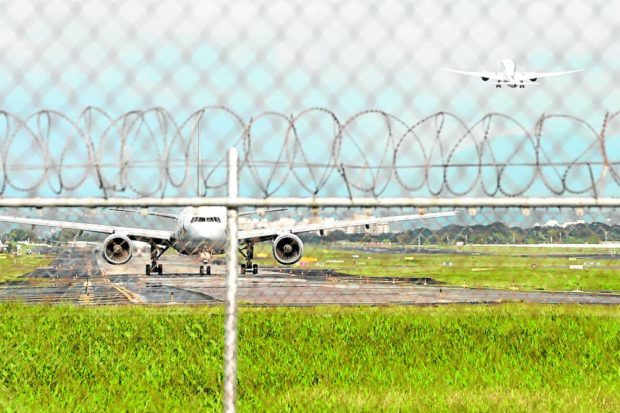
FILE PHOTO: Commercial planes prepare to take off at the Ninoy Aquino International Airport on Monday, January 2, 2023, as officials of the Philippines’ main gateway try to restore normal operations after the airport’s air traffic management system broke down on New Year’s Day, canceling more than 300 flights. Philippine Daily Inquirer
MANILA, Philippines — The Civil Aviation Authority of the Philippines (CAAP) on Wednesday stressed the need to urgently upgrade the airport’s air traffic control system, as it expressed doubt that the New Year’s Day snag was due to a cyberattack.
According to CAAP, the air traffic management system glitch “does not appear to be a cybercrime because affected electrical equipment cannot be manipulated from outside [the] CAAP compound.”
“Nonetheless, a review will still be conducted by cyber-security experts,” it said in a statement released following a briefing with transport officials, including Department of Transportation (DOTr) Secretary Jaime Bautista, National Security Adviser Clarita Carlos, and Department of Information and Communications Technology (DICT) Secretary Ivan John Uy.
READ: Naia power outage, tech glitch shut PH airspace
Prof. Carlos, in the same statement, said aviation communications and electrical equipment should be declared as vital to national security in order to facilitate the purchase and prevent a repeat of the hitch that delayed or canceled or diverted 361 domestic and international flights which affected at least 56,000 travelers.
She emphasized that failure of vital infrastructures such as the Communications, Navigation and Surveillance Systems for Air Traffic Management (CNS/ATM) poses a threat to national security and necessitates quick action.
During the meeting of government transport and security officials, they reached a common agreement to enhance CAAP facilities and replace the damaged equipment.
Uy, for his part, offered to assist CAAP in expediting the acquisition of equipment through the DICT.
“We will give our full support to DOTr and CAAP [in] resolving this issue,” he said.
After the meeting, officials and representatives of the DOTr, DICT, Department of National Defense, National Intelligence Coordination Agency, and Intelligence Service of the Armed Forces of the Philippines inspected the affected air traffic control equipment and facilities inside the CAAP.
The CAAP earlier pointed to failure in its uninterruptible power supply (UPS) as the reason behind the technical problems on its air traffic management last January 1. The UPS, according to the CAAP, is directly linked to its CNS/ATM in its Philippine Air Traffic Management Center.
The power outage resulted in the loss of communication, radio, radar, and internet at the Ninoy Aquino International Airport (Naia), which affected operations in CAAP-managed airports in Clark, Pampanga; Mactan, Cebu; and Davao, among others.
On Monday, January 2, the CAAP admitted that its air traffic control equipment is outdated.
RELATED STORIES
January 1, 2023, the day PH airspace went blank, strips mask off air travel woes, outdated system
Senate probe into New Year’s Day PH air traffic snag sought
CAAP welcomes probe into New Year PH air traffic hitch

